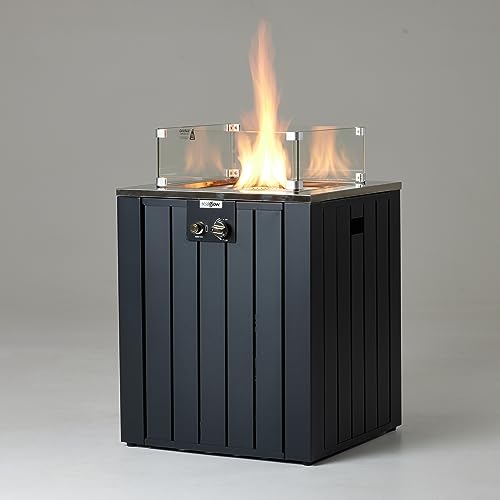What Is Buy Patio Heating And Why Is Everyone Dissing It?
The Essential Guide to Buying Patio Heating: Everything You Need to Know
As the weather turns cooler, many homeowners start to consider how to extend their outdoor home into the cold months. Patio heating enables cozy events under the stars, improving year-round functionality of patios, decks, and gardens. This article will supply a comprehensive overview of patio heating options, aspects to think about when purchasing, and answers to often asked questions.
Types of Patio Heaters
Patio heaters been available in different designs and performances, each dealing with various user needs. Here's a breakdown of the most popular options:
1. Propane Patio Heaters
- Description: These portable heaters operate on propane gas canisters.
- Benefits:
- Easy to move and establish.
- Supplies instant heat.
- Suitable for bigger outdoor areas.
- Considerations:
- Requires routine refilling of propane tanks.
- Might be restricted by local policies on outdoor gas appliances.
2. Gas Patio Heaters
- Description: Connected directly to a gas line.
- Advantages:
- No need for refilling; a continuous supply of hot gas.
- Cost-efficient in the long term for frequent use.
- Factors to consider:
- Requires expert installation.
- Less portable than propane heaters.
3. Electric Patio Heaters
- Description: Heaters powered by electrical power.
- Advantages:
- Easy to set up and use; just plug them in.
- Perfect for small events and restricted outdoor areas.
- Considerations:
- Less powerful than gas heaters; might not heat large areas effectively.
- Needs access to electric outlets.
4. Infrared Heaters
- Description: Heaters that use infrared technology to warm items and people straight rather of heating the surrounding air.
- Advantages:
- Highly energy-efficient and eco-friendly.
- Instant heat without waiting.
- Considerations:
- Effectiveness can be restricted by wind.
- Generally more costly than standard heaters.
5. Fire Pits and Tabletop Fireplaces
- Description: Open flame units that can likewise act as stylish outdoor design.
- Advantages:
- Multifunctional; supplies heat and ambiance.
- Factors to consider:
- Requires consistent guidance and maintenance.
- Less efficient heat distribution compared to other heaters.
Factors to Consider When Buying Patio Heaters
Buying patio heating requires careful factor to consider to ensure you purchase an unit that fulfills your specific needs. Below are essential elements to evaluate:
Size of the Area:
The main factor to consider is the size of the outdoor space you wish to heat. Bigger patios may need more powerful heaters or multiple units to distribute warmth efficiently.Heating Capacity:
This is determined in BTUs (British Thermal Units). Normally, greater BTU rankings suggest a heater that can generate more heat.Movement and Placement:
Determine whether you choose a portable solution or a fixed installation. Believe about where you prepare to position the heater, and how often you may need to move it.Fuel Source:
Evaluate your choice for propane, gas, or electrical models based on schedule and benefit. Each fuel type has associated expenses and factors to consider.Security Features:
Opt for designs equipped with security functions such as tip-over security and automatic shut-off. This is essential when using heaters in outdoor spaces.Design and Aesthetics:
Choosing an aesthetically enticing heater can improve your outdoor atmosphere. Search for options that complement your existing furniture and decoration.Weather Resistance:
If the heater will remain outdoors all year, consider models developed to hold up against different weather condition components such as rain or snow.
Contrast Table of Patio Heaters
Type
Heat Source
Portability
Rate Range
Pros
Cons
Propane Patio Heaters
Propane Gas
High
₤ 100-₤ 400
Instantaneous heat, portable
Needs refilling, local regulations
Natural Gas Heaters
Gas
Low
₤ 300-₤ 700
Continuous supply, economical
Needs installation
Electric Patio Heaters
Electrical power
High
₤ 50-₤ 300
Easy to use, no fuel required
Restricted range and heat
Infrared Heaters
Electricity
Medium
₤ 150-₤ 500
Efficient, instantaneous heat
Wind effects, higher expense
Fire Pits/ Fireplaces
Wood/Gas
Variable
₤ 100-₤ 600
Decorative, multifunctional
Requires supervision, upkeep
Frequently Asked Questions About Patio Heating
1. The number of BTUs do I require for my patio?
The variety of BTUs needed depends on the size of your patio. A basic guideline is:
- Up to 20 sq feet: 10,000 BTUs
- 20-50 sq ft: 20,000 BTUs
- 50-100 sq feet: 30,000 BTUs
2. Are patio heaters safe to utilize?
Yes, as long as security guidelines are followed. Look for heaters with security functions and guarantee they are operated in well-ventilated locations.
3. Can electrical patio heaters be used indoors?
It is not suggested to utilize outdoor heaters indoors due to the danger of fire and carbon monoxide accumulation. Constantly confirm maker standards.
4. What is the typical expense to run a patio heater?
Operating costs differ widely based upon the kind of fuel and energy prices in your location. For electrical systems, average usage might cost around ₤ 0.07-₤ 0.30 per hour.
5. How do I preserve my patio heater?
Routine maintenance includes clearing out any particles, checking gas connections for leakages, and ensuring that electrical components are protected and operating.
Investing in patio heating is an excellent way to extend the enjoyment of outdoor spaces well into the cooler months. With numerous options offered, potential buyers need to evaluate their unique needs, space measurements, and preferred heating approaches. By thinking about the aspects and contrasts provided in this short article, property owners can make a well-informed decision and ensure their patio remains a comfortable social center throughout the year.
